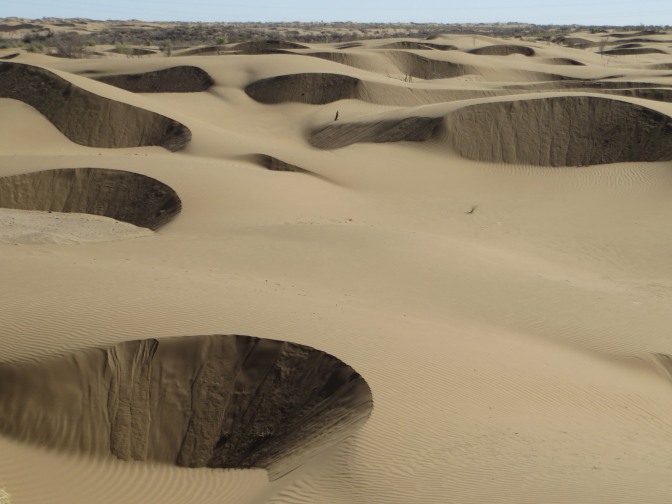Garagum

Vast Central Asian desert complete with fiery wonders

Covering over seventy percent of Turkmenistan, the Karakum Desert may not be the biggest, the hottest, the driest or even the sandiest desert, but it certainly is one of the most interesting. Gas production from the sands is the driving force behind the country’s economy, a happy side effect of which is the craters of collapsed drill sites. It is studded with impressions of seashells and parts of it even appear to be ancient dried-up ocean beds.
Our intrepid tour team ventured out into the Karakum Desert on two separate forays, first for an overnight trip up to the mythical Darvaza Gas Crater, the “door to hell”, then for two nights heading out west towards the shining shores of the Caspian Sea. We travelled by convoy in 4x4s, bouncing our way across the wide and unmarked roads, seeing much of the country along the way. A personal highlight was the Yangykala Canyons, a spectacular setting that I was surprised to find is so unknown, it didn’t even have a Wikipedia page at the time I first wrote it up.
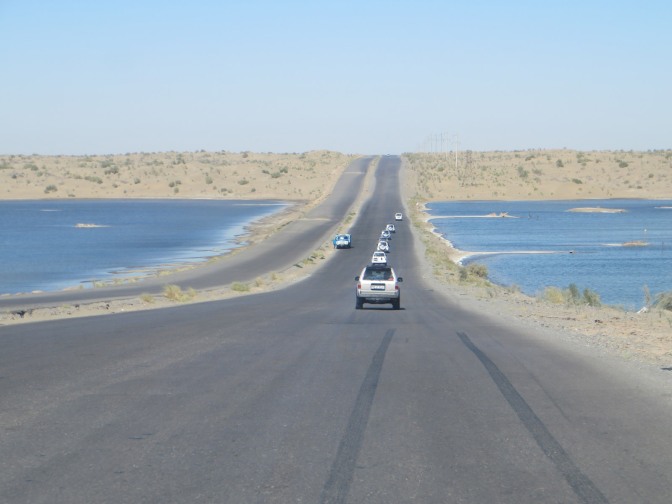
Six-ish lanes of unmarked tarmac run north from Ashgabat towards the gas crater, although the quality deteriorated a bit the further we headed. On occasion both sides merged into one, and driving on the right became less relevant.
A lunchtime stop at a local dusty village was punctuated with a visit to the family yurt, and a cheerful local lady who gave her kid a few spins in the indoor swing.

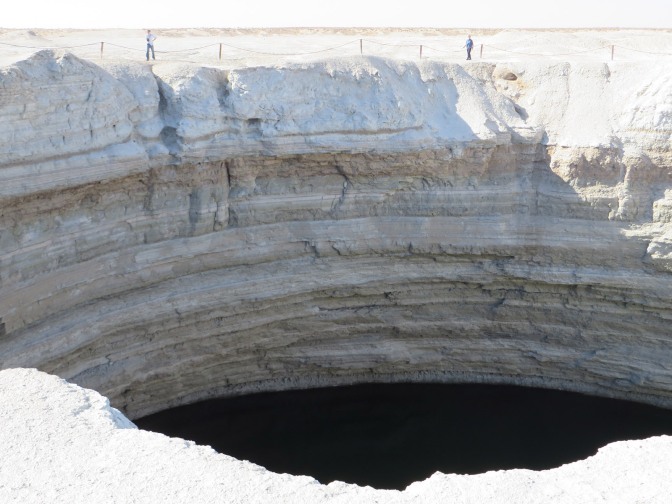
It was our first crater, so we started simply with the water crater – although it was significantly deeper and larger than I’d expected. The edges mostly overhung the water and it was clear there had been recent collapses, which didn’t stop us from skipping around the whole thing and peering inside. Nobody would have been getting out of this in a hurry.
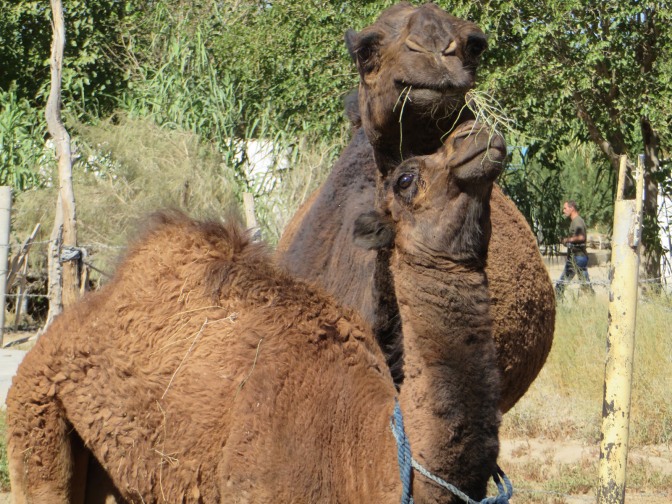
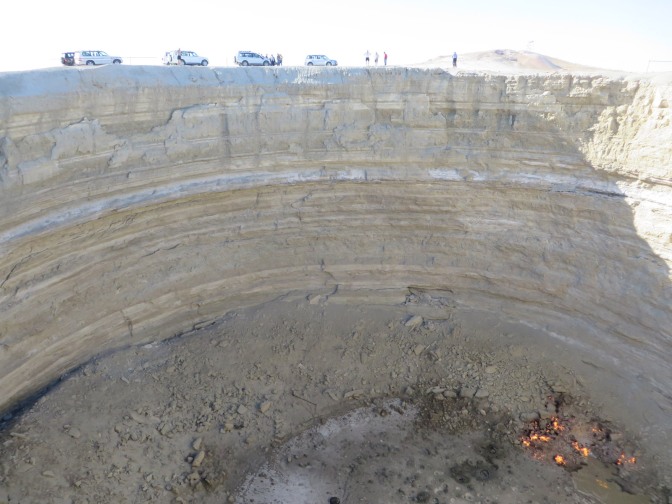
Next up was the mud crater, which we again parked a bit too close to for my liking. The craters were formed when gas drilling rigs punctured underground caverns which then collapsed in on themselves. The mud crater, as well as sporting a gloopy lake bubbling with gas, was ignited a few years earlier by a burning tyre.
Deeper into the desert we went, but still there were signs of life, such as this lonely yurt.
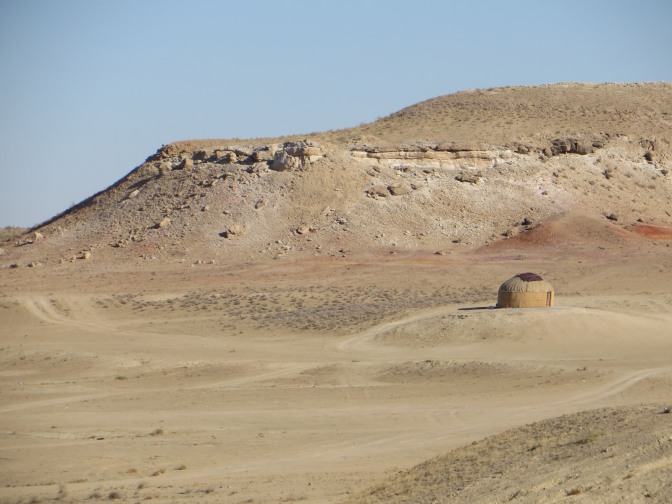
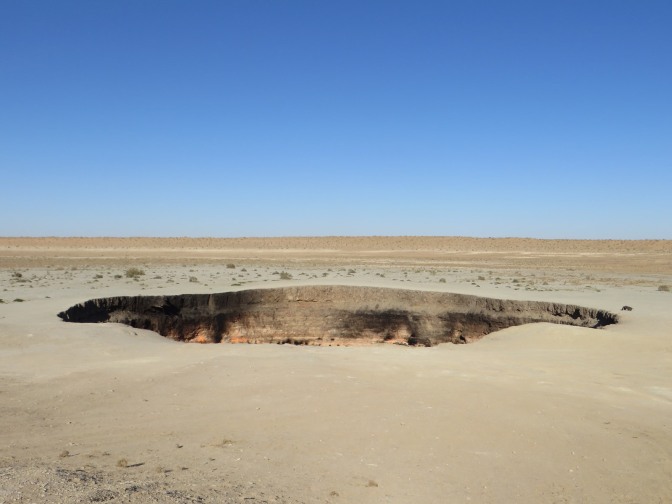
We finally arrived at the gas crater, by day it wasn’t obvious from a distance what was going on, but the closer we walked to the edge, the hotter it rapidly got. There were no fences or other means to prevent idiots from falling in.
Our merry convoy set up camp for the night. Having paid a single supplement, I found that I had a tent to myself which felt a little odd when around half the others were sharing, but the real negative came during the night when the temperature plummeted and I was shivering by myself.

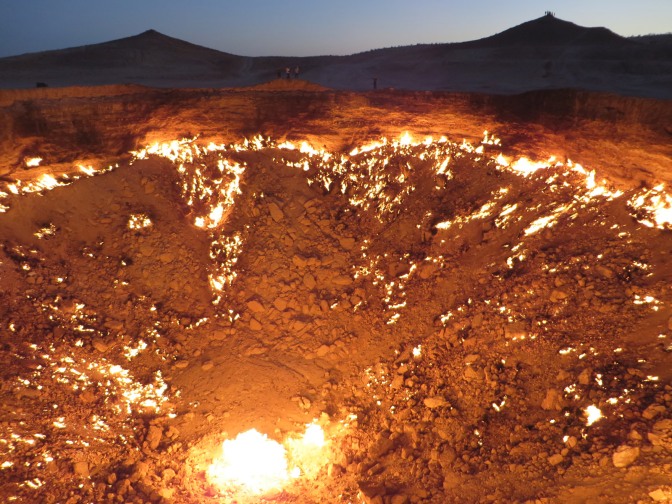
The Darvaza gas crater or the “door to hell” has been burning since the 1970s, only a few years after drilling collapsed the underground chamber. It had been obvious enough that there was gas leaking from the rocks, and upon lighting it the scientists figured it would burn off fairly quickly. Fortunately it hasn’t, as this is fast becoming one of Turkmenistan’s top, if perverse, tourist attractions.
Some of our group watching the moon and stars come out in the glow of the crater.
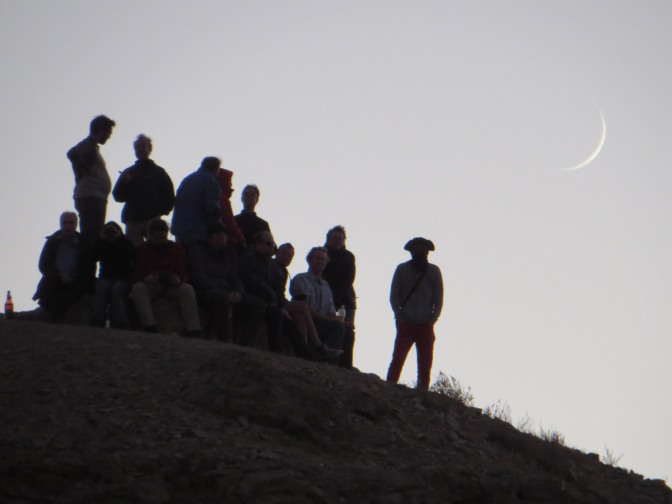

There were some excellent silhouettes to be seen from the top of the nearby hills.
Part of the twisted wreckage of the drilling rig remains, jutting out over the flames below and enlaced with earth. I can’t vouch for its stability, but another of our party lay down on it first as modelled here, so that was good enough for me.
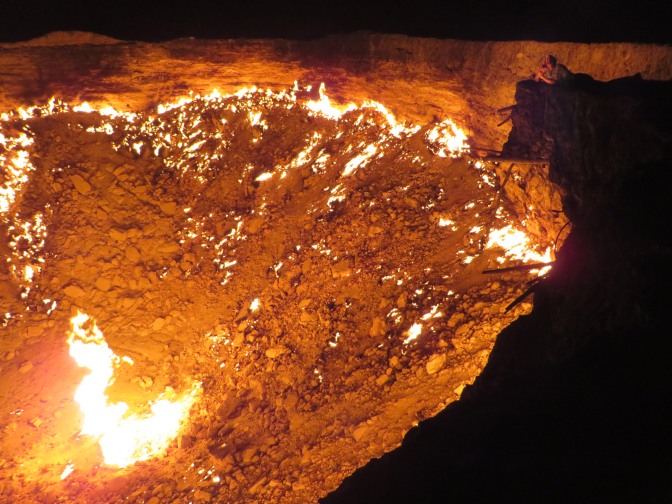
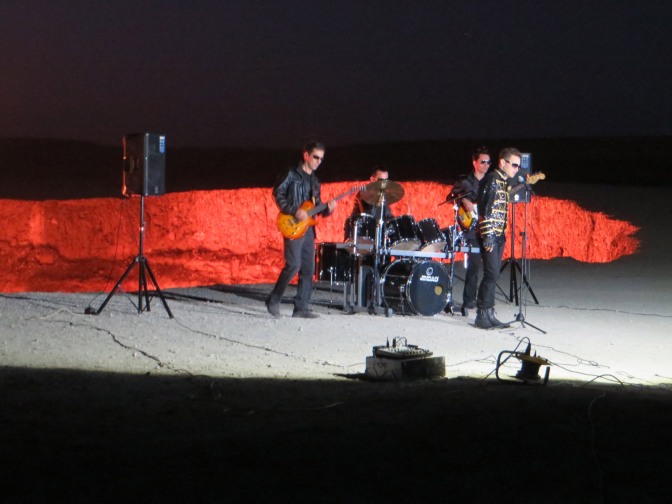
Being a very abstract location, we weren’t the only group visiting that evening, and found ourselves competing for crater time with Turkmenistan’s favourite rock boy band, DJ Begga. Their resulting music video “Biwepa” can be found on all good video streaming websites.
The gas crater creates a fantastic glowing effect, a singular gash in an otherwise flat desert, with the sun just below the horizon.
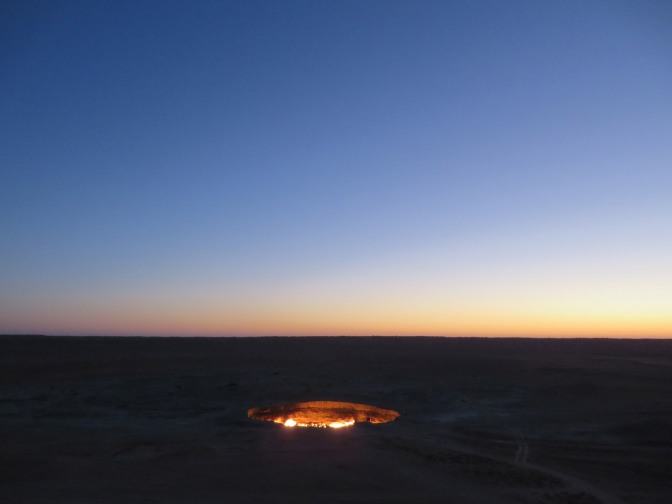

Even by day, the flames are clearly visible. We had a couple more hours after sunrise to enjoy the heat and warm up after the cold night under canvas.
On our second desert foray, one of our first stops was at Kow Ata underground lake, for a quick dip in the geothermally heated subterranean waters. The cave is large and deep, and the water disappeared into the darkness so we didn’t go too far.
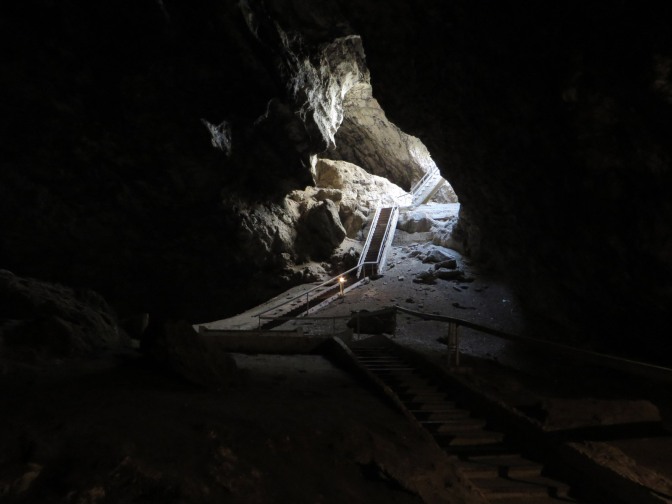
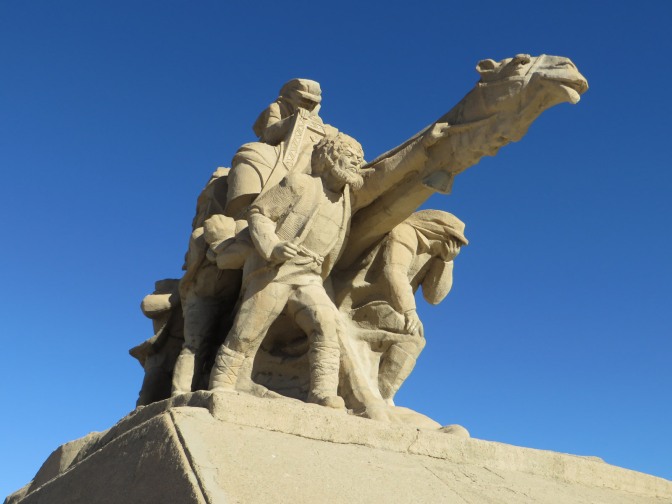
A very sandy looking camel statue in the desert town of Balkanabat, where we stopped for the night on the way to Turkmenbashi. Our hotel was designed like a giant yurt, but was surprisingly modern and more comfortable even than the Ak Altyn in Ashgabat.
Markets in Ashgabat were remarkably jumpy about taking photos, but in Balkanabat they were much more relaxed with the result that we got some decent snaps of the local people and produce, even in the fish market.

There was no shortage of evidence that this land was once the bottom of the sea, with shell fossils abounding. We also picked up some heavy black metallic fragments, very worn.

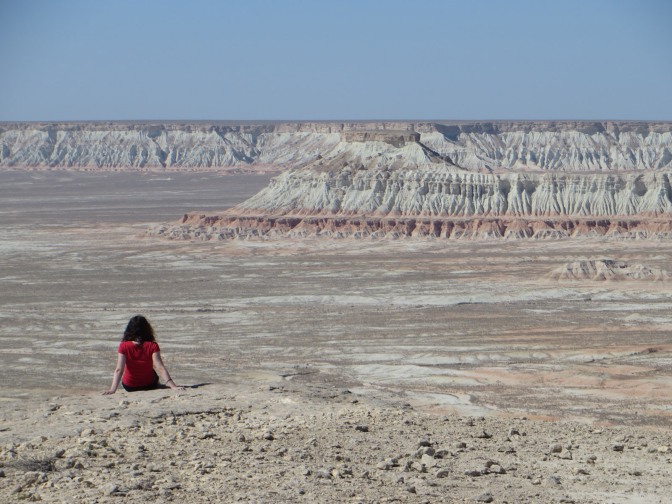
Even on a macro scale it was not hard to imagine this being the bed of an ancient dried-up ocean. Here we stopped at a lookout point atop the Yangykala Canyon, Turkmenistan’s version of the Grand Canyon.
The softer layers below the crispy hard surface are blown away from underneath, with large chunks rolling down over the centuries.

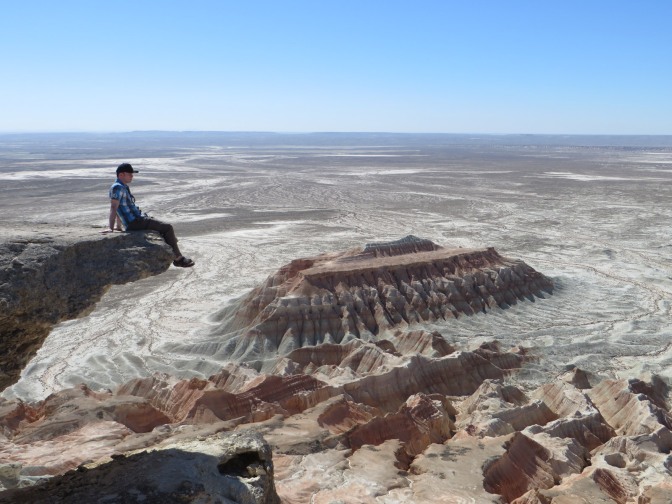
At the highest point of the Yangykala Canyon, this ledge protrudes sublimely in front of the most photogenic backdrop. It was not nearly as relaxing to sit there as it may appear.
Beautiful rusty ochre colours of this tremendous eroded landscape.
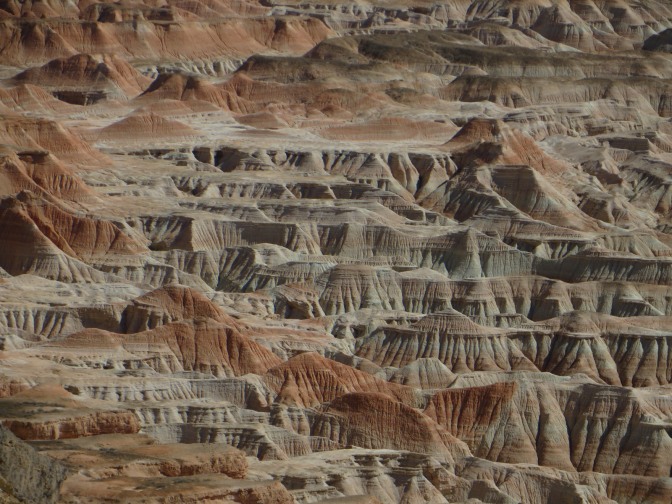

This camel train gave us cause for pause in our own train of Land Cruisers, as they crossed blithely in front. Camels have right of way here.
Created 2017 | Updated 2024

